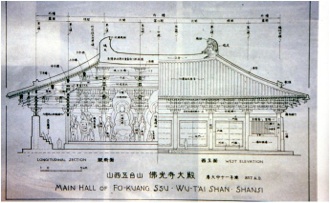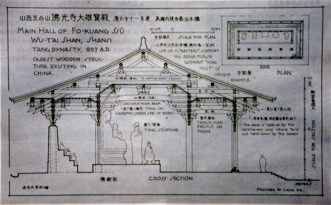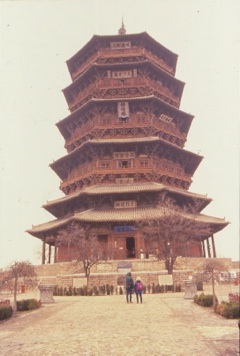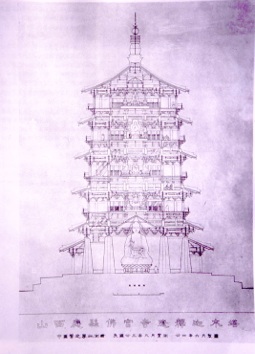Ten Centuries of Timber Framing:
A Journey from Mountain Valleys to the Center of the Kingdom
Ten Centuries of Timber Framing:
A Journey from Mountain Valleys to the Center of the Kingdom
Articles: Ten Centuries of Timber Framing

Richard S. Wiborg
Berkeley, California
One can travel in northern China and see a rich architectural history. Our journey begins in a remote
village nestled into a mountainside in Shansi province, just below Inner Mongolia. We arrive at the
main temple of Foguangsi, built in 857. It is one of a precious few surviving Tang dynasty buildings,
approximately 50 x 100 ft. and 45 ft. to the ridge. Like most palaces and temples, the interior of the
building is one cavernous space. The roof is gray tile, and the walls are whitewashed plaster with
earthy red woodwork. The roof brackets are remarkable for their size and for being the earliest
example of the Lever Arm (angtou) bracket system. It is hard to imagine how carpenters cut, moved,
and erected timbers for a building of such large dimensions.

From A Pictorial History of Chinese Architecture, Liang Ssu-ch’eng, 1991 reprint, Taipei
From A Pictorial History of Chinese Architecture, Liang Ssu-ch’eng, 1991 reprint, Taipei
Two hundred years later, in 1056 in the same region, another generation of inspired builders raised
the Muta Wood Pagoda. Five stories and 200 ft. tall, it is one of the great timber-frame structures in
the world. It is octagonal, 50 ft. across the base, with nine pent roofs and a full roof on top. The
board footage of wood posts and beams used in this structure is a big number. There are perhaps
25,000 pieces in the bracket sets. The ground floor level beam-ends are splintered by the crushing
weight of all that they carry above. On each floor groups of Buddhist statues patiently await
visitors. Muta is scheduled for restoration, and it is a credit to the Chinese government that they
willingly invest major resources to maintain and restore their national treasure buildings.


From A Pictorial History of Chinese Architecture, Liang Ssu-ch’eng, 1991 reprint, Taipei